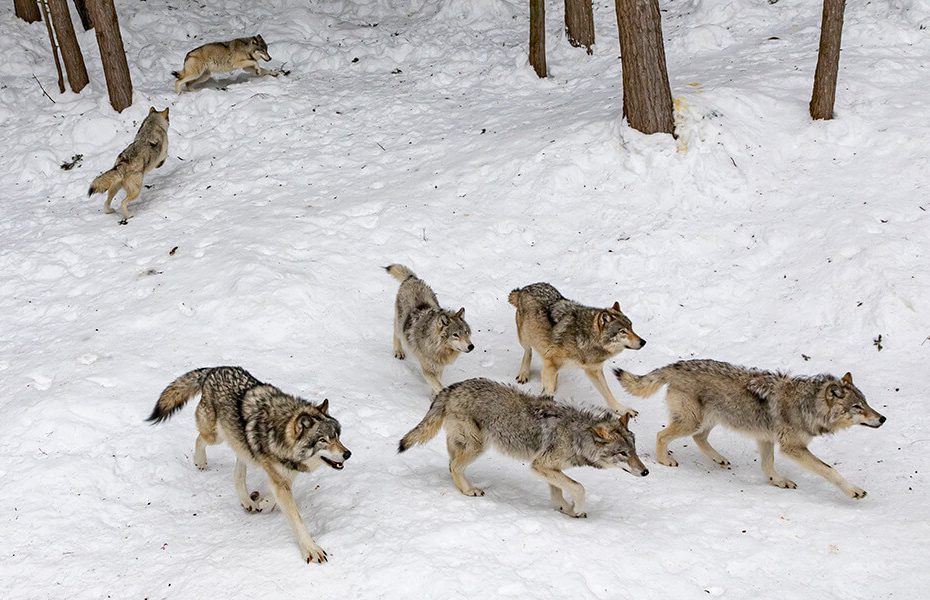
Who should decide how a state manages its gray wolf population? After the Trump administration removed the animals from the endangered species list last year, many states were left to determine how to handle their ever-growing wolf packs.
If you ask Michigan state Sen. Ed McBroom, only those residents who live in close proximity to wolves should have a say in how that species is managed.
The wolf population in Michigan is relegated entirely to the state’s Upper Peninsula. Sen. McBroom just introduced a bill that would only allow residents of the UP to sit on the influential wolf management advisory council.
“Nobody would accept the idea of only having people from the U.P. deciding what goes on with the downstate elk herd,” McBroom told local media. If downstate residents want a stake in the wolf debate, he said, “we’d be happy” to entertain the idea of relocating wolves below the bridge that separates the UP from the rest of the state.
SEE ALSO: Wisconsin Wolf Hunters More Successful Than Anticipated: Culled 97 Over Quota
The council is not a decision-making body, but it does advise the state’s Natural Resources Commission, which sets wolf management policy.
Currently, the council must include DNR Director Dan Eichinger or a designee, plus members representing conservation, hunting or fishing interests, tribal government, agriculture and animal advocacy. Members can come from any part of the state, but right now only one member lives in the UP, according to McBroom.
If McBroom’s bill passes, members would still have to come from each interest group, but they would have to reside in the UP. If the wolves migrate outside the UP, McBroom’s bill stipulates that a majority of the commission would still have to come from the UP.
Though the commission is designed to hold considerable sway in setting wolf management regulations, they have yet to meet after members were appointed three months ago.
SEE ALSO: USFWS: The Gray Wolf Has Recovered in Lower 48, Will Be Taken Off Endangered Species List
McBroom’s bill is especially contentious as the Commission decides whether to allow wolf hunting in the state. Right now, it is still illegal to kill gray wolves unless they are actively attacking livestock or a dog. But the state’s pro- and anti-hunting lobbies are working to set the state’s management strategy as the population grows to over 700 individuals.
Wolf hunting is currently legal in several states with large wolf populations, including Idaho, Montana, Wisconsin, and Wyoming. Idaho made headlines recently after passing a bill that allows hunters to reduce the population from 1,500 to the originally agreed-upon size of 150. The legislature also expanded the methods hunters and trappers can use to take wolves.
McBroom’s bill is scheduled for a hearing Wednesday in the Senate Natural Resources Committee, which he chairs.
